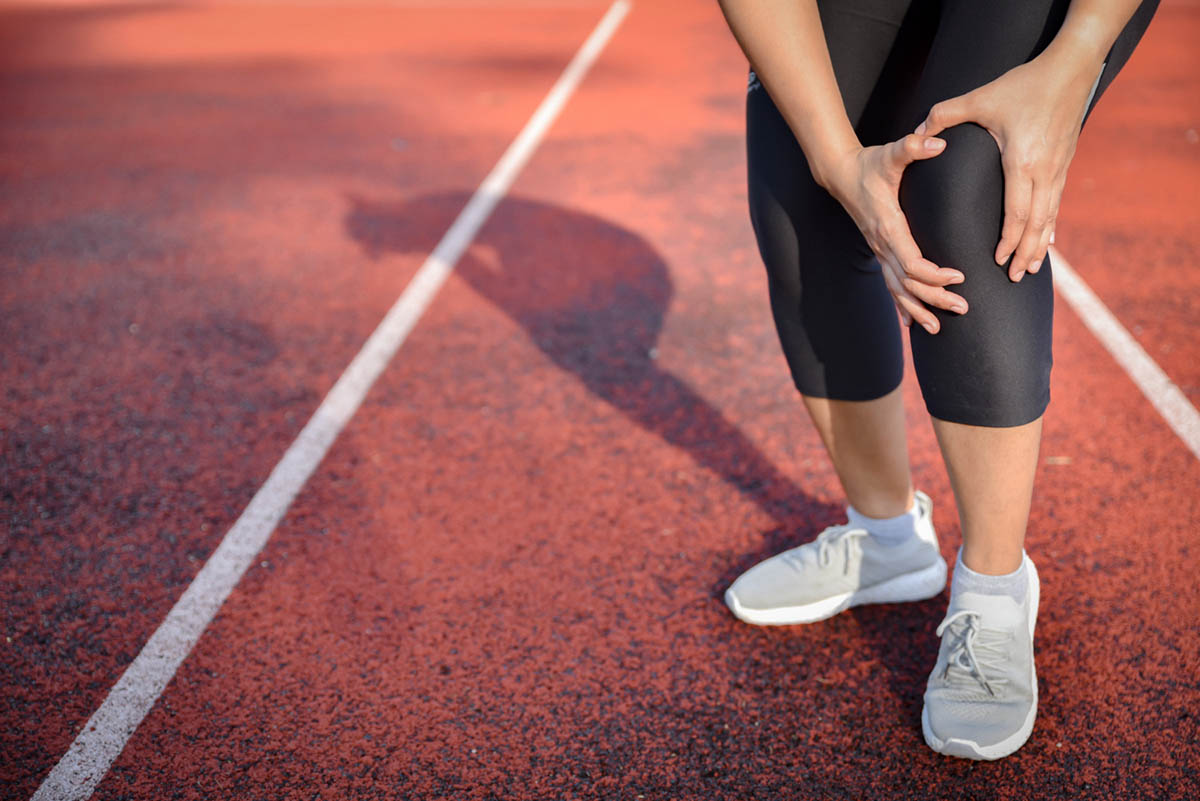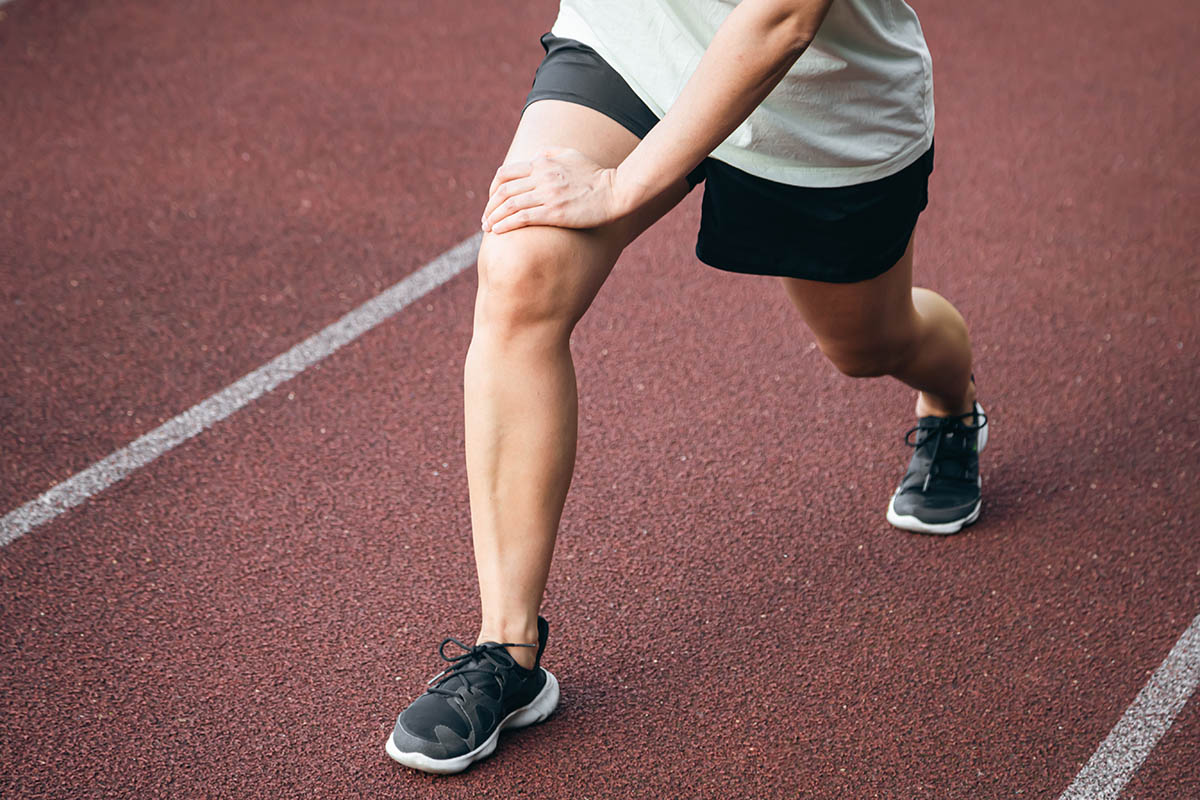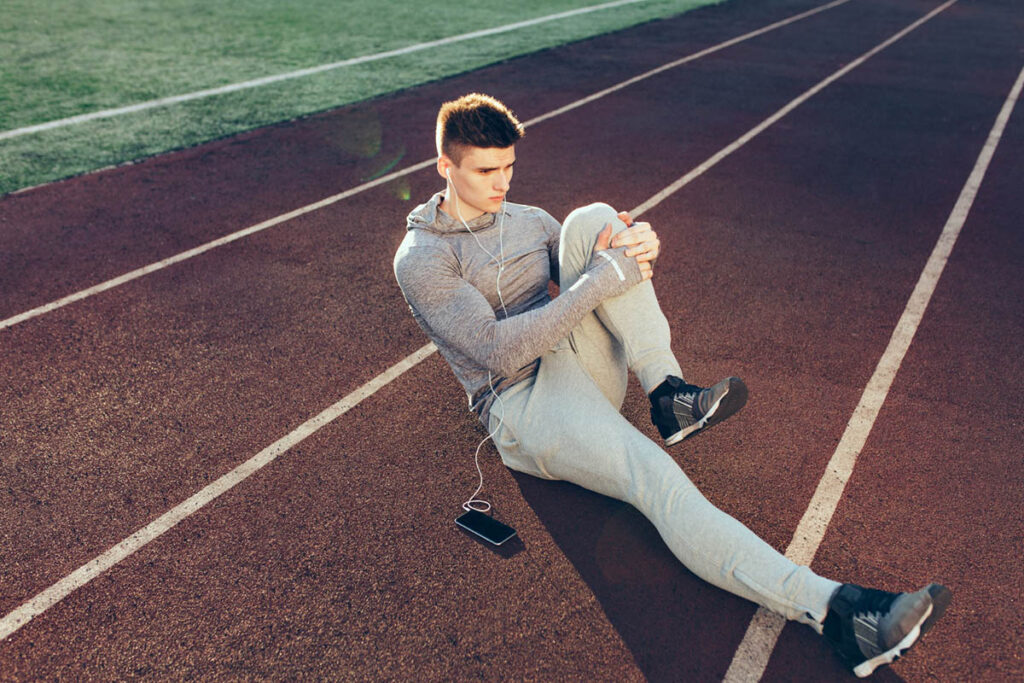Runner’s knee, a prevalent running-related injury, is a source of discomfort and frustration for many athletes. This condition, medically referred to as patellofemoral pain syndrome (PFP), manifests as pain or discomfort around the kneecap (patella), often exacerbated by repetitive motion or overuse. As one of the most common injuries affecting runners, it accounts for a significant proportion of knee-related issues in sports medicine clinics. Understanding the nature of a runner’s knee is crucial for those eager to resume their running routines. How long does it take to recover, and what are the most effective treatments? This guide dives into the causes, recovery timelines, and evidence-based strategies to manage, treat, and prevent a runner’s knee, empowering you to get back on track safely and sustainably.
What is Runner’s Knee?
Runner’s knee, also known as patellofemoral pain syndrome (PFP), is a condition that causes pain around the front of the knee and kneecap. It is often associated with repetitive stress or improper knee joint alignment during activities like running, climbing stairs, or squatting. This condition is one of the most common forms of knee pain treatment athletes seek, significantly impacting performance and quality of life. Understanding the mechanics and contributing factors behind a runner’s knee is the first step toward effective management and prevention.
Overview of Patellofemoral Pain Syndrome
Runner’s knee is characterized by pain in the front of the knee, particularly around or behind the kneecap. It represents 20 to 40 percent of all knee problems and is the most common running injury in sports medicine clinics. This condition is often caused by improper alignment or overuse of the knee joint during activities such as running, jumping, or squatting.
Key Symptoms of Runner’s Knee
Recognizing the symptoms of a runner’s injury is crucial for early intervention and recovery. This condition typically presents with persistent discomfort around the kneecap, often aggravated by physical activities or prolonged periods of sitting. Common symptoms include:
- Dull, aching pain around or behind the kneecap.
- Discomfort that worsens with activities like running, climbing stairs, or sitting for extended periods.
- Popping or grinding sensations in the knee.
- Swelling or inflammation in some cases.
Common Causes of Runner’s Knee
Understanding the causes of a runner’s knee is key to addressing and preventing this common condition. From repetitive motion to poor biomechanics, various factors can place undue stress on the knee joint, leading to pain and dysfunction. The most common causes include:
Overuse and Repetitive Motion
Runner’s knee often develops from repetitive stress on the knee joint. Increased frequency, intensity, or duration of activity can overload the patellofemoral joint, leading to irritation and pain.
Weak Muscles and Poor Biomechanics
The quadriceps, glutes, or hip muscle weakness can contribute to poor knee alignment and biomechanics. This imbalance places excessive stress on the kneecap, exacerbating symptoms.
Improper Footwear and Running Surfaces
Worn-out shoes, lack of arch support, or running on uneven or hard surfaces can increase the risk of developing a runner’s knee by altering gait mechanics and increasing impact forces on the knee.
How Long Does Runner’s Knee Take to Heal?
The runner’s knee recovery time varies depending on the severity of the condition and the treatment approach. While mild cases can heal in just a few weeks, more severe instances may require months of consistent care and rehabilitation to recover fully. Key factors influencing recovery include:
Typical Recovery Time for Mild Cases
Most cases of a runner’s knee resolve within 4 to 8 weeks with proper treatment, including rest, activity modification, and conservative measures like R.I.C.E. (Rest, Ice, Compression, Elevation). With consistent care, mild cases may improve in as little as 2–4 weeks.
Factors Affecting Recovery Time
The time it takes to recover from a runner’s knee depends on various individual and external factors. Understanding these variables can help set realistic expectations for recovery and highlight areas where adjustments may improve outcomes. Key factors include:
- Severity of the Injury: The extent of damage to the knee significantly determines recovery time. While mild cases may resolve within a few weeks, severe injuries often require up to 12 weeks or more of focused care and rehabilitation.
- Adherence to Treatment: Following a structured rehabilitation plan is critical for efficient recovery. Skipping exercises or engaging in activities aggravating the knee can prolong healing and increase re-injury risk.
- Individual Factors: Personal characteristics such as age, overall health, and fitness level can influence how quickly the body heals. Younger, healthier individuals may recover faster while underlying health issues can slow the process.
Signs of a Delayed Recovery
While most cases of a runner’s knee heal within a few weeks, some individuals may experience prolonged symptoms, signaling a delay in recovery. These warning signs are essential to prevent further complications and ensure proper healing. Common indicators include:
- Persistent pain despite rest and treatment.
- Swelling or instability in the knee joint.
- Difficulty performing daily activities or returning to running.
Effective Treatment Options for Runner’s Knee

Treating a runner’s knee requires a multifaceted approach to alleviate pain, promote healing, and prevent recurrence. From conservative home remedies to professional interventions, understanding the available treatment options can help tailor a plan that meets individual needs. Key approaches include:
Rest, Ice, Compression, and Elevation (R.I.C.E.)
The R.I.C.E. protocol—Rest, Ice, Compression, and Elevation—is fundamental to managing a runner’s knee, particularly in its early stages. Rest is critical for reducing stress on the knee joint, allowing the affected tissues time to recover without further strain. Applying ice helps to alleviate pain and minimize inflammation, providing immediate relief from discomfort. Compression, typically achieved with an elastic bandage or brace, reduces swelling and supports the joint, preventing further irritation. Elevating the leg above heart level improves circulation and promotes fluid drainage, reducing swelling and discomfort. Together, these simple yet effective steps form the foundation for initial recovery and can significantly shorten healing time when applied consistently.
Physical Therapy and Rehabilitation
Physical therapy and rehabilitation are vital components of a runner’s knee recovery, addressing the root causes and preventing recurrence. At Vitality Therapy and Performance, therapists create customized programs tailored to each individual’s needs. These programs often include targeted strengthening exercises for the quadriceps, glutes, and hip muscles to improve stability and support the knee joint. Stretching routines enhance flexibility in key muscle groups such as the hamstrings and calves, reducing tension that may contribute to knee pain. Additionally, gait analysis helps identify and correct biomechanical issues, such as improper running mechanics, which may have triggered or exacerbated the condition. By combining these strategies, physical therapy accelerates recovery and equips runners with the tools to prevent future injuries.
Medication and Pain Management
Medication and pain management support the treatment of runner’s knee by addressing discomfort and inflammation. Over-the-counter options such as non-steroidal anti-inflammatory drugs (NSAIDs), like ibuprofen, can provide temporary relief, making it easier to stay consistent with rehabilitation exercises and daily activities.
When to Seek Medical Intervention
If symptoms persist beyond 8 weeks or worsen, a consultation with a sports medicine specialist may be necessary. In rare cases, imaging studies or advanced interventions like corticosteroid injections may be recommended.
How to Prevent Runner’s Knee
Prevention is the best strategy for avoiding the pain and setbacks associated with a runner’s knee. Learning how to prevent runner’s knee involves strengthening muscles, improving flexibility, and maintaining proper running form. By adopting these strategies, runners can significantly reduce their risk of injury and enhance overall performance. Key preventive measures include:
Strengthening Exercises for Runners
Targeted strength training can reduce the risk of a runner’s knee by improving muscle support and stability around the knee. Key exercises include:
- Squats and Lunges for Quadriceps and Glutes: These foundational exercises build strength in the quadriceps and glutes, essential for knee stability. Proper form is key to maximizing benefits and preventing strain on the knee joint during these movements.
- Clamshells and Side-Lying Leg Lifts for Hip Stabilizers: These targeted exercises focus on strengthening the hip stabilizer muscles, which help maintain proper knee alignment during movement. Strong hip muscles reduce the risk of biomechanical issues leading to a runner’s knee.
- Calf Raises to Strengthen Lower Leg Muscles: Calf raises enhance the strength and endurance of the lower leg muscles, which absorb impact and provide support during running. Muscular calves also contribute to better balance and reduce strain on the knee joint.
Proper Stretching and Flexibility Techniques
Incorporate stretching routines for the hamstrings, calves, and hip flexors to maintain joint flexibility and prevent muscle tightness. Here are some effective stretches to incorporate into your routine for flexibility and injury prevention:
- Hamstring Stretch: Sit on the floor with one leg extended and the other bent. Reach for your toes on the extended leg, keeping your back straight. Hold for 20–30 seconds.
- Standing Calf Stretch: Place your hands on a wall and step one foot back, keeping it straight with the heel pressed into the ground. Bend the front knee slightly, hold the stretch for 20–30 seconds, and switch sides.
- Hip Flexor Stretch: Kneel on one knee with the other foot forward, forming a 90-degree angle. Shift your hips forward while keeping your back straight to feel a stretch in the hip flexor of the back leg. Hold for 20–30 seconds.
- Quad Stretch: Stand on one leg and pull your other foot toward your glutes with your hand. Keep your knees together, hold the stretch for 20–30 seconds, and switch sides.
- Butterfly Stretch: Sit on the floor with the soles of your feet together, and your knees bent outward. Press your knees toward the floor with your elbows and hold for 20–30 seconds.
Correct Running Form and Posture
Correct running form and posture are essential for minimizing knee strain and improving efficiency. By maintaining an upright posture, taking short strides, and aiming for a midfoot strike, runners can reduce impact forces, enhance stability, and prevent injuries like a runner’s knee.
Footwear and Orthotics for Injury Prevention
Footwear and orthotics play a crucial role in preventing running injuries, such as runner’s knee. Choosing supportive running shoes and custom orthotics can correct biomechanical issues such as overpronation or flat feet, ensuring proper alignment and reducing knee stress.
Injury Prevention for Runners
To maintain consistent training and avoid setbacks, injury prevention for runners is essential. By incorporating thoughtful strategies into their routines, runners can protect their joints, improve performance, and reduce the risk of overuse injuries like a runner’s knee. Key prevention tips include:
Warm-Up and Cool-Down Routines
Warm-up and cool-down routines are essential for injury prevention and optimal performance. A dynamic warm-up increases blood flow to the muscles and prepares them for activity, while a proper cool-down helps reduce stiffness, promote recovery, and prevent soreness after a run.
Gradual Training Progression
Gradual training progression is key to minimizing knee stress and preventing overuse injuries like runner’s knee. Adhering to the 10% rule, which suggests increasing weekly mileage by no more than 10%, allows the body to adapt safely to higher training demands.
Cross-Training and Rest Days
Cross-training and rest days are vital for maintaining fitness while reducing the risk of overuse injuries. Low-impact activities like swimming or cycling provide cardiovascular benefits without stressing the knees, while regular rest days give your body time to recover and rebuild, ensuring sustainable progress.
The Role of Physical Therapy in Runner’s Knee Recovery

Physical therapy is pivotal in addressing the underlying causes of a runner’s knee and promoting a full recovery. By combining targeted exercises, manual therapy, and expert guidance, physical therapists help runners alleviate pain, restore function, and prevent future injuries.
How a Physio Can Help Your Recovery
Physical therapists at Vitality Therapy and Performance specialize in diagnosing and treating runner’s knees with personalized care plans. Through manual therapy, corrective exercises, and education, they target the root causes of pain, promoting recovery and reducing the risk of future injuries.
Key Treatments Used in Therapy
Physical therapy for a runner’s knee often includes a variety of treatments tailored to the individual’s needs. Soft tissue mobilization and massage are commonly used to reduce muscle tension and improve flexibility around the knee, enhancing overall joint mobility. Taping techniques, such as kinesiology taping, provide patellar support and improve alignment, reducing pain during activity. Additionally, education on activity modification is a critical component, helping patients understand how to adjust their training routines to avoid aggravating the condition. Therapists also guide safe return-to-sport strategies, ensuring a gradual and effective transition back to running while minimizing re-injury risk. Together, these therapies create a comprehensive approach to recovery and long-term prevention.
What to Do if Runner’s Knee Won’t Heal
If the runner’s knee persists despite following standard treatments, it may indicate an underlying issue that requires further investigation. Exploring advanced therapies or consulting a specialist can provide new insights and solutions to promote healing and restore function.
Possible Long-Term Solutions
For chronic cases of runner’s knee that don’t respond to conventional treatments, advanced options like platelet-rich plasma (PRP) injections or extracorporeal shockwave therapy (ESWT) can help promote tissue healing and reduce pain. These therapies target the affected area directly, stimulating repair and offering a non-invasive alternative to surgery.
Surgical Options for Severe Cases
In rare cases where conservative treatments are ineffective, surgical procedures such as lateral release or patellar realignment may be necessary to correct tracking issues and alleviate pain. These interventions restore proper knee function and are typically reserved for severe or persistent runner’s knee conditions.
Conclusion
While common, runners’ knees are manageable with the right combination of rest, rehabilitation, and preventive strategies. By understanding its causes and exploring effective treatment options, runners can take proactive steps to recover and return to their favorite activities stronger, more resilient, and pain-free. Taking the time to address underlying issues and prioritize prevention ensures a healthier, more sustainable running journey.
FAQs
How can I make my runner’s knee feel better?
To alleviate the runner’s knee pain, begin with the R.I.C.E. protocol (Rest, Ice, Compression, Elevation) to reduce pain and swelling. Strengthening supporting muscles and consulting a physical therapist for a personalized recovery plan can promote healing and prevent recurrence.
How bad does runner’s knee hurt?
The intensity of pain in a runner’s knee varies, but it is typically described as dull, aching discomfort. This pain often worsens with running, climbing stairs, or sitting for extended periods.
Do you need surgery for runner’s knee?
Surgery for a runner’s knee is rarely necessary and is generally reserved for severe, chronic cases that do not respond to conservative treatments like physical therapy and rest. When required, surgical options aim to correct underlying structural issues causing the pain.

